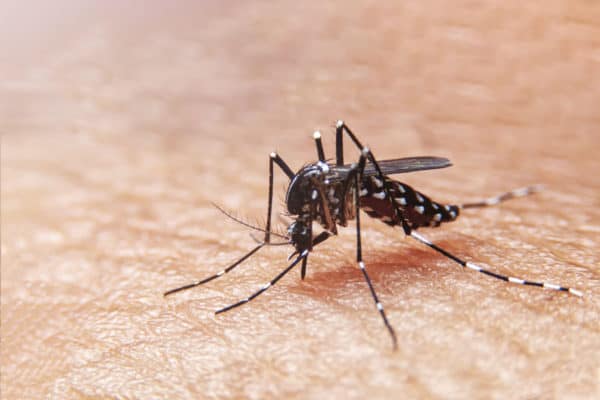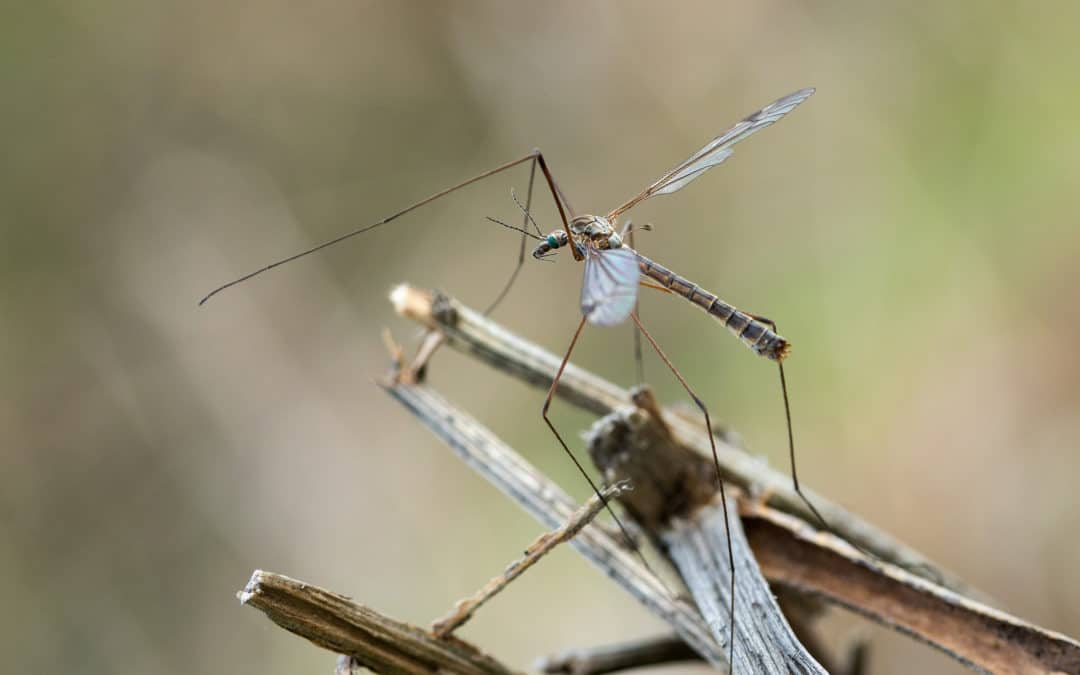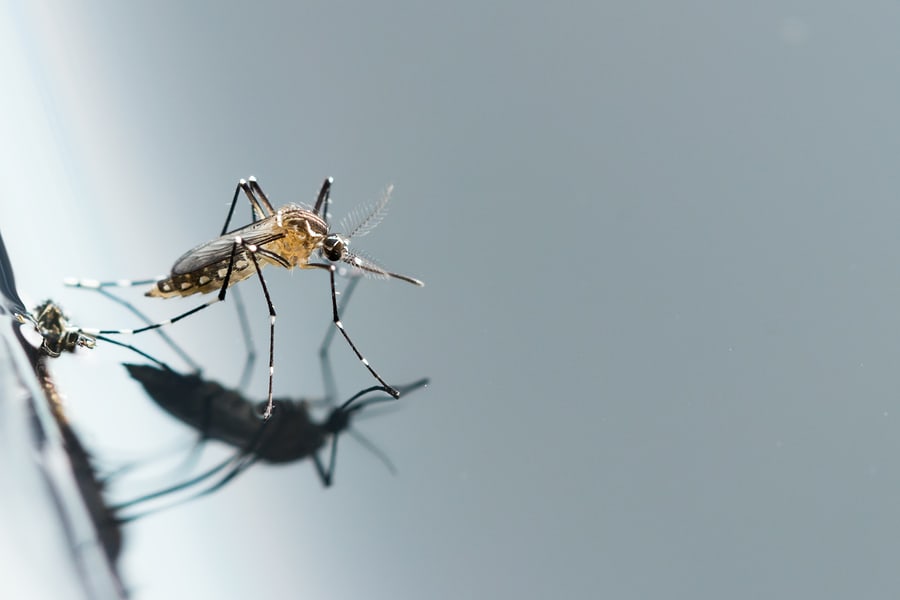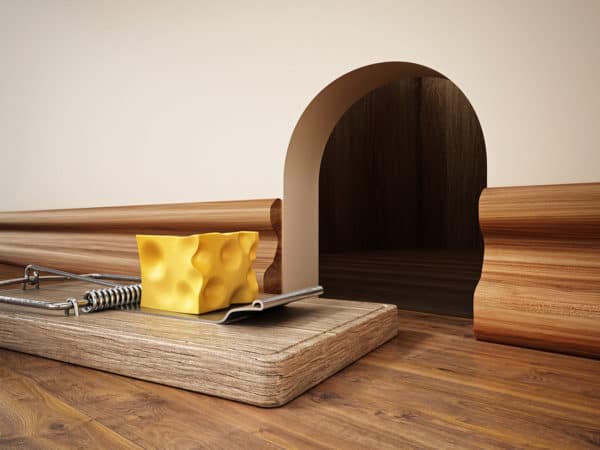READY TO GET STARTED?
REQUEST A FREE ESTIMATE
Fill out the form below or call (888) 466-7849 for a free, no-obligation estimate.

The peak of mosquito season is from April to October. During this time, mosquitoes invade, leaving behind itchy bites and aggravation. They are also capable of spreading serious diseases such as Zika and West Nile virus. While many of us take precautions by using mosquito repellent and wearing long sleeved clothing, sometimes these prevention techniques just aren’t enough. A mosquito treatment is often needed to help control mosquito populations.
There are two options to mosquito treatments – green and traditional. Green mosquito treatments utilize products derived from flowers and bacteria that are only applied to the areas where they are needed, minimizing their impact on surrounding areas. These treatments also work on adult and larvae.
A traditional mosquito treatment consists of 5 steps:
How much does a mosquito treatment cost? Treatments typically last between 21 and 30 days and should be applied as often. Most treatments are billed per 1/4 acre or per 1/2 acre. Generally only the perimeter of the yard is treated, concentrating on areas of foliage and woods. The average cost of a mosquito treatment is between $350 and $500 per season for a 1/4 to 1/2 acre property. This cost can range anywhere from $325 up to $1900 depending on the size of the property and the frequency of treatments. Mosquito treatments are performed on a monthly basis with an average of $70 to $100 cost per visit. Some companies will offer a discount on this rate if you sign up for recurring treatments.
While there are DIY mosquito treatments available, a professional pest control company has the experience, training, and equipment to get rid of mosquitoes and keep them away. Most will utilize an Integrated Pest Management (IPM) program that combines a variety of treatment and control methods to eliminate mosquitoes with minimal impact to the surrounding environment.
Protecting Your Garden From Birds
The 411 on Granddaddy Long Legs
The Summer Big Three: Roaches, Mosquitoes, & Termites

Spending time outdoors is a great way to escape the hustle and bustle of everyday life. Whether it’s spending time by the pool, having a picnic, or just lounging in the yard, relaxing outside is a great activity for the whole family. But the last thing you want to have to deal with while spending time in your yard are mosquitoes. Mosquitoes can be a danger to your family and even pets as they survive by sucking blood from animals and humans. They are usually found in areas of high humidity looking for stagnant, standing water to breed. Luckily, there are ways you can prep your yard to prevent mosquitoes.
Remove Unnecessary Items
Since mosquitoes breed in standing water, it is essential to eliminate any items that could hold water. Items such as foundations, toy buckets, outdoor pet bowls, flowerpot sauces, tarps, pool covers, and more should not stay in your yard for a long period of time. It’s also important to remove excess grass, leaves, firewood, and yard clippings as mosquitoes tend to stay in grass and debris around your home.
Clean Your Gutters
Clogged gutters can not only create standing water but will also catch debris and leaves. This provides mosquitoes a perfect breeding location. Make sure that your gutters are clean and clear, especially after a thunderstorm. Consider installing gutter guards to help prevent clogs and clutter.
Fill Hollow Areas
Any low-lying areas like ditches can also collect standing water after rain or watering plants. Make sure to check around your yard that you don’t have these; if you do notice them you can simply fill them in with dirt. Additionally, check for any hollow logs and stumps throughout your yard. They not only can hold standing water but will also provide overwintering mosquitoes a place to hibernate during cold weather.
Maintain the Pool
If you have a well-maintained pool, mosquitoes will most likely avoid it. However, if a pool goes unused for a long period of time, these pests will be attracted to the stagnant water. Make sure to keep the pool maintained or covered if you’re planning to not use it for a while.
By utilizing these tips, you can start to enjoy your yard and worry less about mosquito bites! If you are still having an infestation of mosquitoes, it’s best to contact your local pest company to provide you with the best plan of action to eliminate mosquitoes. Request a Free Estimate now to get started.

Imagine sitting outside, enjoying the weather with family, when you notice what looks to be a mosquito but it’s massive! No, this isn’t a super-sized mosquito, though it may look like one; it’s just a crane fly. Mosquitoes and crane flies can look very similar to one another, though they are very different by nature.
Crane flies can be black, red, or yellow in color depending on their species. Their wings can be transparent, brown, grayish-black or even brownish-yellow. They typically have extremely long legs and elongated faces opposed to the much smaller body of the mosquito. Active in the fall and spring, these creatures enjoy lawns near wooded areas or open fields where the females can lay eggs in the grass. They also tend to increase in numbers when there is a surge of dampness or heavy rainfall.
While mosquitoes can be considered a threat since they are known to survive off the blood of warm-blooded creatures, crane flies are deemed harmless and even gentle creatures. The only real damage that a crane fly can cause is in their larvae state after hatching when they will typically eat grass roots, leaving large brown patches on the lawn.
If you happen to see crane flies roaming around in your yard, don’t be too alarmed as they are no real threat to human health. If you are noticing more mosquitoes flying around, though, that could be a concern. It’s always best to contact a local pest control company who can help identify these pests and suggest a treatment plan if needed.

Typically, when you’re swatting away mosquitoes, you’re most likely outside. But what if you notice these pesky bugs inside your home? Mosquitoes can be considered one of the most irritating pests during the warmer seasons. They’re usually found in areas of high humidity and survive by sucking blood from animals and humans. When you’re relaxing at home after a long day of work, the last thing you want to worry about is getting bit by one or several of these pests. Though, if you’re starting to see them inside your home, it’s probably time to start investigating.
Mosquitoes could easily sneak inside your home through broken screens or doors. Mosquitoes are extremely small, and if there’s a slightest gap open to enter your home, they will. Begin to inspect the screens, windows, and doors in your home. Make sure there aren’t any large gaps or tears that would allow any bugs to enter the home.
Mosquitoes are attracted to still and stagnant water. There’s a high chance of mosquito activity if your property is near standing water with a constant water source. Mosquitoes could easily enter your home and lay their eggs; female mosquitoes will lay eggs in water for survival.
House plants are also known to attract mosquitoes inside the house. If your house plant has a water tray, mosquitoes will typically start to lay their eggs there while also feeding off the plant to get energy. Clean out your water trays periodically to prevent mosquitoes from laying more eggs.
One factor that not all homeowners will think about is a possible plumbing problem attracting mosquitoes. Simple leaks with small pools of water will certainly attract these pests. Mosquitoes are not only attracted to just areas of moisture, they can also be found in shaded, covered areas. Make sure to check crawl spaces, basements, and other areas where a pipe could leak.
Finally, if you’ve inspected all these possible factors and are still being infested with mosquitoes or want to put in place a mosquito prevention plan, call a local pest control company where they can investigate the problem and create a mosquito reduction program designed for your home.

A myth is defined as a widely held but false belief or idea. While myths are often based on some semblance of the truth, more often than not they are exaggerations or misunderstanding or even outright falsehoods. There are tons of myths regarding pests and pest control, some completely outrageous and others almost believable. Here are 10 of our favorite pest control myths.
You’ve heard this one before. Once a bee stings you it can’t sting you again. This is one of those myths that is partly based in the truth. Honeybees, and ONLY honeybees, can only sting once. Other varieties of bees, wasps, hornets, etc. can sting as many times as they want. So be prepared – just because you’ve been stung once doesn’t mean there aren’t more stings coming along right behind that one.
This is another common myth you’ve probably heard – if you don’t mess with a bee it won’t mess with you. Once again, this is not the case. Bees, wasps, hornets, yellow jackets, and other stinging insects will sting you if they feel they or their colony are being threatened. This could be something as simple as walking too close to their nest. If a nest is spotted on or near your home, remove it safely or call a professional to remove it for you.
This is a big misconception in pest control. Just because your house is clean doesn’t mean you are immune to bugs and other pests. While a dirty house can make a pest stay longer, a clean house doesn’t keep them out. Bugs come into a home in search of three things: food, water, and shelter. While an unkempt house can provide more opportunity for these 3 things, a clean house can provide them, as well. What is more important is sealing any entry points that pests can use to access your home.
This myth is similar to #3. Once again, cockroaches will come into your home for 2 main reasons: food and shelter. While they may find these in more abundance in a dirty home, they can also find them in a clean home too. Once a cockroach infestation is established it can be extremely difficult to get rid of. Cockroaches can enter through an opening the size of a quarter so sealing any possible entry points is critical in preventing them.
This is another myth that is based in part on the truth. Some species of mosquitoes are more active at dawn and dusk but mosquitoes can be active at all hours as long as there is food available. Best practice is to utilize mosquito prevention techniques anytime you will be outdoors.
This one is blatantly false. Bug zappers use ultraviolet (UV) light to attract insects into its cage. Mosquitoes aren’t attracted to UV light at all so they won’t be anywhere near the bug zapper. Bug zappers also don’t usually have enough power to actually kill the insects it attracts so it can have a reverse effect on insect populations around your home.
We’ve all seen or heard this one, either in a story or on TV. While mice will snack on the crumbs of just about any food, cheese actually isn’t their first choice. They would prefer to snack on foods that are high in sugar like peanut butter, candy, honey, or dried fruit. In fact, chocolate or peanut butter are the best choices to use in a mouse trap.
Bed bugs are one of the most difficult pests to eliminate once they establish an infestation in your home. They are extremely small and only come out to feed at night, making them very hard to locate and identify. They can also multiply rapidly and can infest a structure very quickly. Because of this, they are extremely difficult to get rid of on your own and most cases require professional treatments to eradicate.
This is one of the biggest myths of pest control. While termites don’t actually eat brick or concrete, they have no trouble crawling over them to get to the wood beam structures that were used to build your home. For this reason, termites can, in fact, cause significant damage to brick and concrete slab homes.
Just because you don’t see any bugs or any damage from them doesn’t mean they aren’t there. Termites and carpenter ants can cause damage for months before any signs of their damage become visible. Most infestations are well established before any damage is detected. Bed bugs are also hard to spot and often go unseen but leave devastating signs of their presence behind.
While all of these myths about pest control aren’t true, one thing that is true is prevention is the most effective way to avoid a pest infestation. If you suspect you have a pest control issue, contact a professional pest control company whose technicians are trained in the latest technologies and methods to help identify and eliminate your pest problem.
Is Orange Oil Effective As A Treatment For Termites?